
Pearson eText Fundamentals of General, Organic, and Biological Chemistry -- Instant Access (Pearson+)
8th Edition
ISBN: 9780135213759
Author: John McMurry, David Ballantine
Publisher: PEARSON+
expand_more
expand_more
format_list_bulleted
Textbook Question
Chapter 14.1, Problem 14.1P
Identify each of the following compounds as an alcohol, a phenol, or an ether:
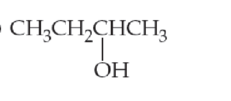
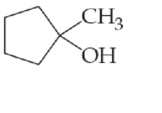
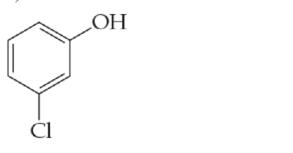
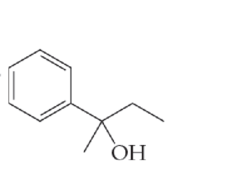
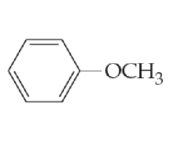

Expert Solution & Answer
Want to see the full answer?
Check out a sample textbook solution
Students have asked these similar questions
The table provides the standard reduction potential, E', for relevant half-cell reactions.
Half-reaction
E'° (V)
Oxaloacetate² + 2H+ + 2e malate²-
-0.166
Pyruvate + 2H+ + 2e → lactate
-0.185
Acetaldehyde + 2H+ + 2e¯ →→→ ethanol
-0.197
NAD+ + H+ + 2e--> NADH
-0.320
NADP+ + H+ + 2e →→ NADPH
Acetoacetate + 2H+ + 2e¯
-
-0.324
B-hydroxybutyrate
-0.346
Which of the reactions listed would proceed in the direction shown, under standard conditions, in the presence of the
appropriate enzymes?
Malate + NAD+ oxaloacetate + NADH + H+
Malate + pyruvate oxaloacetate + lactate
Pyruvate + NADH + H+ lactate + NAD+
Pyruvate + p-hydroxybutyrate lactate + acetoacetate
Acetaldehyde + succinate ethanol + fumerate
Acetoacetate + NADH + H+ → B-hydroxybutyrate + NAD+
Arrange the four structures in order from most reduced to most oxidized.
Most reduced
R-CH2-CH3
R-CH2-CH₂-OH
R-CH,-CHO
R-CH₂-COO
Most oxidized
for each pair of biomolecules, identify the type of reaction (oxidation-reduction, hydrolysis, isomerization, group transfer, or
nternal rearrangement) required to convert the first molecule to the second. In each case, indicate the general type of enzyme
and cofactor(s) c reactants required, and any other products that would result.
R-CH-CH-CH-C-S-COA
A(n)
A(n)
A(n)
A(n)
Palmitoyl-CoA
R-CH-CH=CH-C-S-CoA
°
trans-A-Enoyl-CoA
reaction converts palmitoyl-CoA to trans-A2-enoyl-CoA. This reaction requires
and also produces
Coo
HN-C-H
CH₂
CH₂
CH
CH
CH, CH,
L-Leucine
CH, CH,
D-Leucine
8/6881
COO
HÌNH:
reaction converts L-leucine to D-leucine. This reaction is catalyzed by a(n)
H-C-OH
H-C-OH
C=0
HO-C-H
HO-C-H
H-C-OH
H-C-OH
H-C-OH
CH,OH
Glucose
H-C-OH
CH,OH
Fructose
OH OH OH
CH-C-CH₂
reaction converts glucose to fructose. This reaction is catalyzed by a(n)
OH
OH OPO
I
CH-C-CH
H
Glycerol
Glycerol 3-phosphate
H
reaction converts glycerol to glycerol 3-phosphate. This reaction requires
H,N-
H,N
H…
Chapter 14 Solutions
Pearson eText Fundamentals of General, Organic, and Biological Chemistry -- Instant Access (Pearson+)
Ch. 14.1 - Identify each of the following compounds as an...Ch. 14.1 - Prob. 14.2PCh. 14.2 - Prob. 14.3PCh. 14.2 - Prob. 14.4PCh. 14.2 - Prob. 14.5PCh. 14.3 - Prob. 14.6PCh. 14.3 - For each of the following molecules, (i) redraw...Ch. 14.4 - Prob. 14.1MRPCh. 14.4 - Provide the mechanism for the dehydration of...Ch. 14.4 - Prob. 14.3MRP
Ch. 14.4 - Prob. 14.8PCh. 14.4 - What alcohols yield the following alkenes as the...Ch. 14.4 - Prob. 14.10KCPCh. 14.4 - What products would you expect from oxidation of...Ch. 14.4 - Prob. 14.12PCh. 14.4 - Prob. 14.13KCPCh. 14.5 - Prob. 14.14PCh. 14.5 - Prob. 14.15PCh. 14.7 - Prob. 14.1CIAPCh. 14.7 - Prob. 14.2CIAPCh. 14.7 - Prob. 14.3CIAPCh. 14.7 - Prob. 14.16PCh. 14.8 - What disulfides would you obtain from oxidation of...Ch. 14.9 - Prob. 14.18PCh. 14.10 - Prob. 14.19PCh. 14.10 - Prob. 14.20PCh. 14.10 - Prob. 14.4CIAPCh. 14.10 - Prob. 14.5CIAPCh. 14.10 - Prob. 14.6CIAPCh. 14.10 - Prob. 14.7CIAPCh. 14 - Prob. 14.21UKCCh. 14 - Prob. 14.22UKCCh. 14 - Prob. 14.23UKCCh. 14 - Prob. 14.24UKCCh. 14 - Prob. 14.25UKCCh. 14 - How do alcohols, ethers, and phenols differ...Ch. 14 - What is the structural difference between primary,...Ch. 14 - Prob. 14.28APCh. 14 - Prob. 14.29APCh. 14 - The Taxane nucleus is shown here; it is the basis...Ch. 14 - Vitamin E has the structure shown. Identify the...Ch. 14 - Give systematic names for the following alcohols:...Ch. 14 - Give systematic names for the following compound...Ch. 14 - Draw structures corresponding to the following...Ch. 14 - Draw structures corresponding to the following...Ch. 14 - Prob. 14.36APCh. 14 - Locate the alcohol functional groups in the taxane...Ch. 14 - Prob. 14.38APCh. 14 - Prob. 14.39APCh. 14 - Prob. 14.40APCh. 14 - Prob. 14.41APCh. 14 - Prob. 14.42APCh. 14 - Prob. 14.43APCh. 14 - Assume that you have samples of the following two...Ch. 14 - Which of the following alcohols can undergo...Ch. 14 - The following alkenes can be prepared by...Ch. 14 - Prob. 14.47APCh. 14 - Prob. 14.48APCh. 14 - What alcohols would you oxidize to obtain the...Ch. 14 - Prob. 14.50APCh. 14 - What is the structural relationship between a...Ch. 14 - Prob. 14.52APCh. 14 - Prob. 14.53APCh. 14 - Prob. 14.54APCh. 14 - Prob. 14.55APCh. 14 - Prob. 14.56APCh. 14 - Prob. 14.57APCh. 14 - Identify the chiral center(s) in each of the...Ch. 14 - Are the following molecules chiral or achiral? If...Ch. 14 - Prob. 14.60CPCh. 14 - Prob. 14.61CPCh. 14 - 1-Propanol is freely soluble in water, 1-butanol...Ch. 14 - Prob. 14.63CPCh. 14 - Prob. 14.64CPCh. 14 - Prob. 14.65CPCh. 14 - Prob. 14.66CPCh. 14 - Prob. 14.67CPCh. 14 - Prob. 14.68CPCh. 14 - Prob. 14.69CPCh. 14 - Prob. 14.70CPCh. 14 - Prob. 14.71CPCh. 14 - Prob. 14.72CPCh. 14 - (a)Draw all possible cyclic C7H14O alcohol isomers...Ch. 14 - Prob. 14.74GPCh. 14 - Prob. 14.75GP
Knowledge Booster
Learn more about
Need a deep-dive on the concept behind this application? Look no further. Learn more about this topic, biochemistry and related others by exploring similar questions and additional content below.Similar questions
- After adding a small amount of ATP labeled with radioactive phosphorus in the terminal position, [7-32P]ATP, to a yeast extract, a researcher finds about half of the 32P activity in P; within a few minutes, but the concentration of ATP remains unchanged. She then carries out the same experiment using ATP labeled with 32P in the central position, [ẞ-³2P]ATP, but the 32P does not appear in P; within such a short time. Which statements explain these results? Yeast cells reincorporate P; released from [ß-³2P]ATP into ATP more quickly than P¡ released from [y-³2P]ATP. Only the terminal (y) phosphorous atom acts as an electrophilic target for nucleophilic attack. The terminal (y) phosphoryl group undergoes a more rapid turnover than the central (B) phosphate group. Yeast cells maintain ATP levels by regulating the synthesis and breakdown of ATP. Correct Answerarrow_forwardCompare the structure of the nucleoside triphosphate CTP with the structure of ATP. NH₂ 0- 0- 0- ·P—O—P—O—P—O—CH₂ H H H H OH OH Cytidine triphosphate (CTP) Consider the reaction: ATP + CDP ADP + CTP NH 0- 0- 0- ¯0— P—O— P—O—P-O-CH₂ H Η о H H OH OH Adenosine triphosphate (ATP) NH₂ Now predict the approximate K'eq for this reaction. Now predict the approximate AG for this reaction. Narrow_forwardThe standard free energy, AGO, of hydrolysis of inorganic polyphosphate, polyP, is about −20 kJ/mol for each P; released. In a cell, it takes about 50 kJ/mol of energy to synthesize ATP from ADP and Pi. ○ P O Inorganic polyphosphate (polyP) Is it feasible for a cell to use polyP to synthesize ATP from ADP? Why or why not? No. The reaction is unidirectional and always proceeds in the direction of polyP synthesis from ATP. Yes. If [ADP] and [polyP] are kept high, and [ATP] is kept low, the actual free-energy change would be negative. No. The synthesis of ATP from ADP and P; has a large positive G'o compared to polyP hydrolysis. Yes. The hydrolysis of polyP has a sufficiently negative AG to overcome the positive AGO of ATP synthesis. Correct Answerarrow_forward
- In the glycolytic pathway, a six-carbon sugar (fructose 1,6-bisphosphate) is cleaved to form two three-carbon sugars, which undergo further metabolism. In this pathway, an isomerization of glucose 6-phosphate to fructose 6-phosphate (as shown in the diagram) occurs two steps before the cleavage reaction. The intervening step is phosphorylation of fructose 6-phosphate to fructose 1,6-bisphosphate. H H | H-C-OH H-C-OH C=0 HO-C-H HO-C-H phosphohexose isomerase H-C-OH H-C-OH H-C-OH H-C-OH CH₂OPO CH₂OPO Glucose 6-phosphate Fructose 6-phosphate What does the isomerization step accomplish from a chemical perspective? Isomerization alters the molecular formula of the compound, allowing for subsequent phosphorylation. Isomerization moves the carbonyl group, setting up a cleavage between the central carbons. Isomerization causes the gain of electrons, allowing for the eventual release of NADH. Isomerization reactions cause the direct production of energy in the form of ATP.arrow_forwardFrom data in the table, calculate the AG value for the reactions. Reaction AG' (kJ/mol) Phosphocreatine + H₂O →>> creatine + P -43.0 ADP + Pi → ATP + H₂O +30.5 Fructose +P → fructose 6-phosphate + H₂O +15.9 Phosphocreatine + ADP creatine + ATP AG'O ATP + fructose → ADP + fructose 6-phosphate AG'° kJ/mol kJ/molarrow_forwardMacmillan Learning The phosphorylation of glucose to glucose 6-phosphate is the initial step in the catabolism of glucose. The direct phosphorylation of glucose by P, is described by the equation Glucose + P ← glucose 6-phosphate + H₂O AG = 13.8 kJ/mol Coupling ATP hydrolysis to glucose phosphorylation makes thermodynamic sense, but consider how the coupling might take place. Given that coupling requires a common intermediate, one conceivable mechanism is to use ATP hydrolysis to raise the intracellular concentration of Pi. The increase in P; concentration would drive the unfavorable phosphorylation of glucose by Pi- Is increasing the P; concentration a reasonable way to couple ATP hydrolysis and glucose phosphorylation? No. The phosphate salts of divalent cations would be present in excess and precipitate out. Yes. Increasing the concentration of P; would decrease K'eq and shift equilibrium to the right. Yes. The extra ATP hydrolysis would provide enough free energy to drive the…arrow_forward
- The phosphorylation of glucose to glucose 6-phosphate is the initial step in the catabolism of glucose. The direct phosphorylation of glucose by P, is described by the equation Glucose + P → glucose 6-phosphate + H₂O AG' = 13.8 kJ/mol In principle, at least, one way to increase the concentration of glucose 6-phosphate (G6P) is to drive the equilibrium reaction to the right by increasing the intracellular concentrations of glucose and Pj. The maximum solubility of glucose is less than 1 M, and the normal physiological concentration of G6P is 250 μM. Assume a fixed concentration of P, at 4.8 mM. The calculated value of K'cq is 4.74 × 10-³ M-¹. Calculate the intracellular concentration of glucose when the equilibrium concentration of glucose 6-phosphate is 250 μM, the normal physiological concentration. [glucose] = 10.99 Correct Answer Would increasing the concentration of glucose be a physiologically reasonable way to increase the concentration of G6P? No. Because the concentration of P,…arrow_forwardCalculate the equilibrium constant for the phosphorylation of glucose to glucose 6-phosphate at 37.0 °C. K'eq = M-' In the rat hepatocyte, the physiological concentrations of glucose and P, are maintained at approximately 4.8 mM. What is the equilibrium concentration of glucose 6-phosphate (G6P) obtained by the direct phosphorylation of glucose by P.? [G6P] = Does this reaction represent a reasonable metabolic step for the catabolism of glucose? Why or why not? Yes, because the value of AG" is positive. No, because the K'eq is too large for the reaction to proceed in the forward direction. Yes, because AG is negative at the calculated value of K'eq No, because [G6P] is likely to be higher than the calculated value. Marrow_forwardThe pKa values for glutamic acid are 2.19, 9.67, 4.25. Sketch out the titration curve for this amino acid and include all of the pKa values and the pl.arrow_forward
- Calculate the isoelectronic point, pl, from the pKa values for histidine, arginine and asparagine.arrow_forwardThe free energy released by the hydrolysis of ATP under standard conditions is -30.5 kJ/mol. If ATP is hydrolyzed under standard conditions except at pH 5.0, is more or less free energy released? Why? More free energy is released because the increased [H+] stabilizes the negative charge on the ADP molecule. Less free energy is released because an acidic environment depletes cellular ATP levels. Less free energy is released because the reaction favors ATP production over hydrolysis due to the higher [H+] in solution. More free energy is released because the total cellular concentrations of ATP, ADP, and P; are greater at the lower pH. Correct Answerarrow_forwardConsider a system consisting of an egg in an incubator. The white and yolk of the egg contain proteins, carbohydrates, and lipids. If fertilized, the egg transforms from a single cell to a complex organism. How does the entropy change in both the system (developing chick) and suroundings (the egg environment) drive the irreversible process of chick development? ☐ The release of glucose from sucrose, which produces energy needed for chick development, decreases entropy in the surroundings. Chick development increases entropy in the system, which causes a concominant decrease in entropy in the surroundings. Carbohydrates, proteins, and lipids within the egg break down into CO2 and H2O, which increases entropy in the surroundings. Chick development decreases entropy in the system, but this is smaller than the concominant increase in entropy in the surroundings.arrow_forward
arrow_back_ios
SEE MORE QUESTIONS
arrow_forward_ios
Recommended textbooks for you
 Principles Of Radiographic Imaging: An Art And A ...Health & NutritionISBN:9781337711067Author:Richard R. Carlton, Arlene M. Adler, Vesna BalacPublisher:Cengage Learning
Principles Of Radiographic Imaging: An Art And A ...Health & NutritionISBN:9781337711067Author:Richard R. Carlton, Arlene M. Adler, Vesna BalacPublisher:Cengage Learning Human Biology (MindTap Course List)BiologyISBN:9781305112100Author:Cecie Starr, Beverly McMillanPublisher:Cengage Learning
Human Biology (MindTap Course List)BiologyISBN:9781305112100Author:Cecie Starr, Beverly McMillanPublisher:Cengage Learning




Principles Of Radiographic Imaging: An Art And A ...
Health & Nutrition
ISBN:9781337711067
Author:Richard R. Carlton, Arlene M. Adler, Vesna Balac
Publisher:Cengage Learning

Human Biology (MindTap Course List)
Biology
ISBN:9781305112100
Author:Cecie Starr, Beverly McMillan
Publisher:Cengage Learning

GCSE Chemistry - Acids and Bases #34; Author: Cognito;https://www.youtube.com/watch?v=vt8fB3MFzLk;License: Standard youtube license